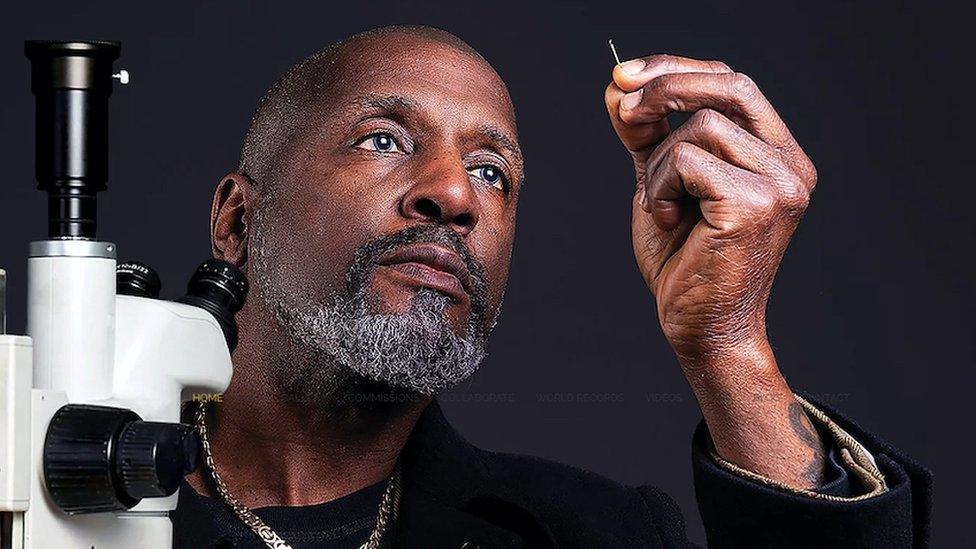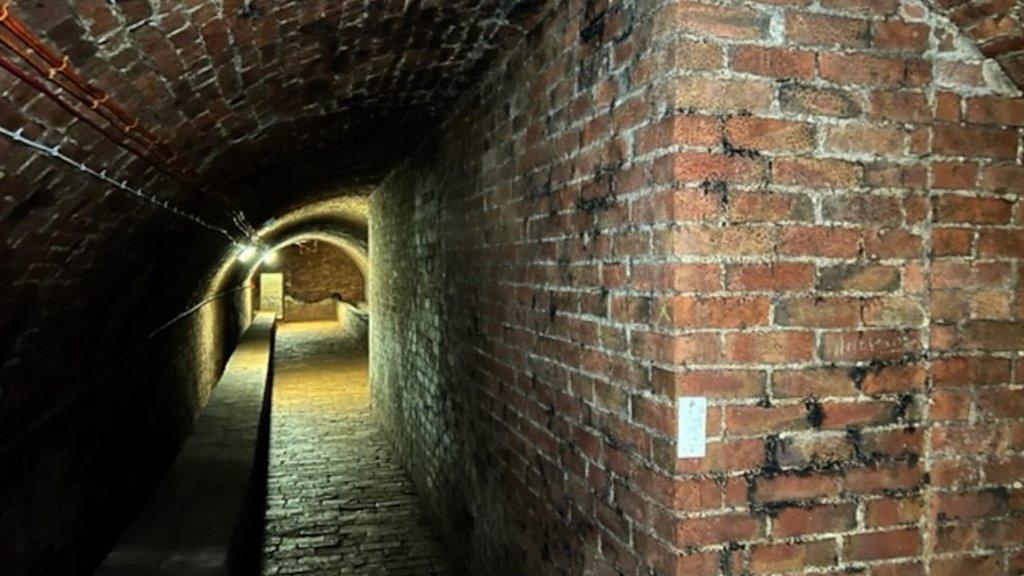Microscopic sculptures to go on display at Wollaton Hall
- Published

Dr Willard Wigan said he wanted his exhibition to highlight threats to the environment
Some of the smallest sculptures ever created are to be displayed at Wollaton Hall in Nottingham.
The stately home will host the Disappearing World exhibition from April until October.
Artist Dr Willard Wigan has created 20 microscopic works of art as part of a collection he wants to use to highlight environmental issues.
Nottingham City Council said it was thrilled to host the exhibition in the hall's newly refurbished galleries.
The exhibition focuses on biodiversity in danger and launches alongside a new natural history gallery at Wollaton Hall which highlights the need to study taxidermy to support global conservation.
It will appear in the hall's newly refurbished natural history gallery, which has been revamped with grants from the National Lottery Heritage Fund and Arts Council England.
Internationally renowned
Dr Wigan said he was inspired to created the pieces, which are small enough to fit in the eye of a needle but are visible when magnified, because he believes "small things really do matter".
Nottingham City Council's museums and galleries service chief operating officer Ron Inglis said: "We are thrilled we have been able to deliver the transformation of Wollaton Hall's galleries, and work in collaboration with Dr Willard Wigan, which brings the Miniature Masterpieces to Wollaton Hall as part of the Disappearing Worlds collections.
"The transformation of the galleries and the free exhibition will ensure Wollaton Hall continues to be a place for all visitors to enjoy, and continue to attract national visitors on a national scale."
The exhibition is free to attend.

Follow BBC East Midlands on Facebook, external, on Twitter, external, or on Instagram, external. Send your story ideas to eastmidsnews@bbc.co.uk, external.
Related topics
- Published11 November 2022
